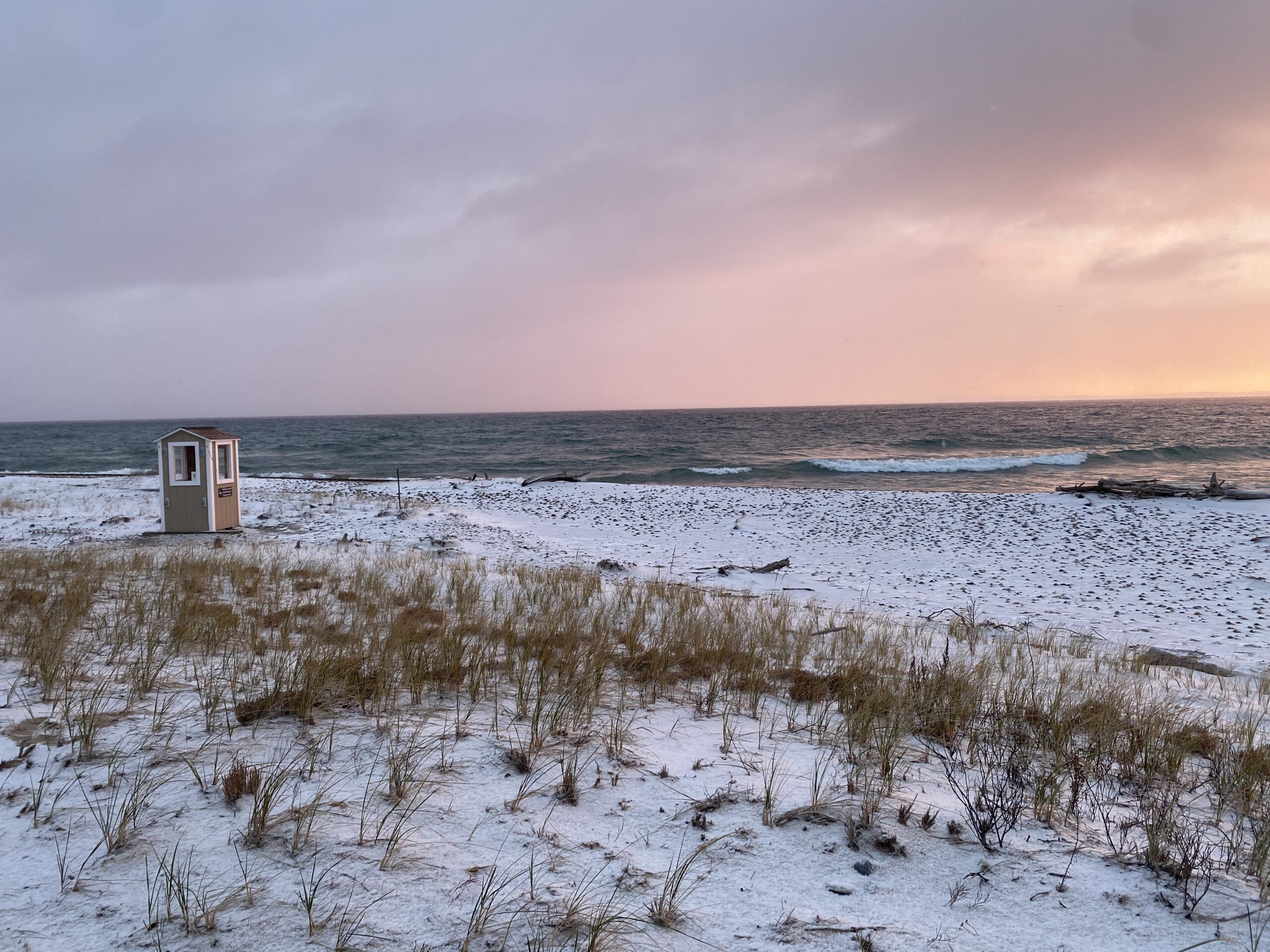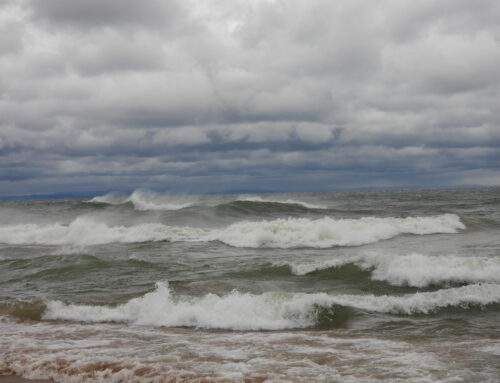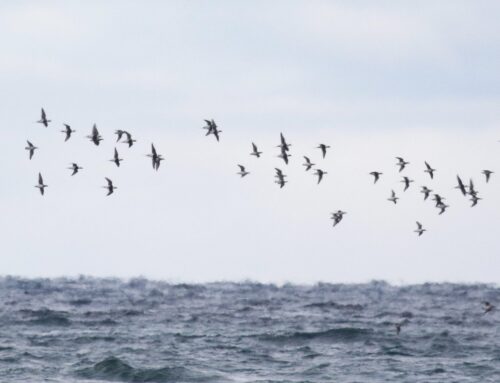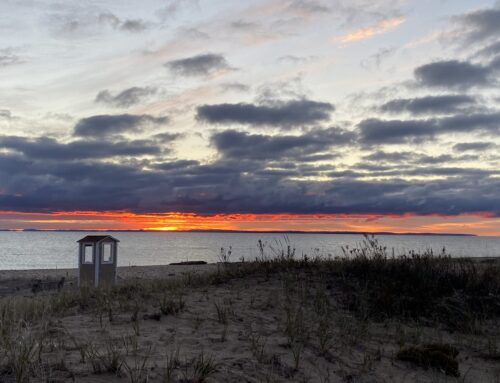The gradual changing of the seasons at Whitefish Point is reaching its finale. The dunes and beach grasses are now covered in snow, with the sand beneath only visible where footprints leave tracks. There was an influx of visitors on Monday for the 50th anniversary of the Edmund Fitzgerald. Parked cars lined the road for almost a mile, but for most other days of the count, the beaches were empty. The woods are also very quiet now, with even the winter finch numbers dropping recently. On the waterbird count, Long-tailed Ducks are thinning out, and the main movements this week were Common Goldeneye, Bufflehead, and mergansers.

Early in the week we had more ducks moving, with Long-tailed Duck totals in the low hundreds. But by the end of the week, we weren’t even breaking triple digits. The sight of Long-tailed Ducks flying “the wrong way” to the NW around the point is becoming increasingly common. Some days this week, almost half of the Long-tailed Ducks I counted would appear far away in Whitefish Bay and fly past the point, disappearing over the horizon to the northwest. This must be a late-season phenomenon with birds lingering and flying out to forage rather than actively migrating.
Totals for the other waterfowl this week were ~800 Common Goldeneye, ~1,000 Red-breasted Mergansers, and ~60 Bufflehead, with just a couple of Hooded Mergansers mixed in. Early in the season, we had a local flock of Common Mergansers that would float around the harbor and occasionally fly past the count. They departed weeks ago, and now we’re getting just a couple of small migrant flocks each day, with the weekly total of about 50 birds. I wonder if we will get a bigger push of these late-season species in the last few days of the count. Most other duck species are in the single digits or entirely absent on a full day of counting (Mallard, Greater Scaup, White-winged and Black Scoters).

Some very grainy ducks. Left to right: 4 American Wigeon, 3 Mallards, 1 American Wigeon, 2 White-winged Scoters. Photo by Frank Fabbro
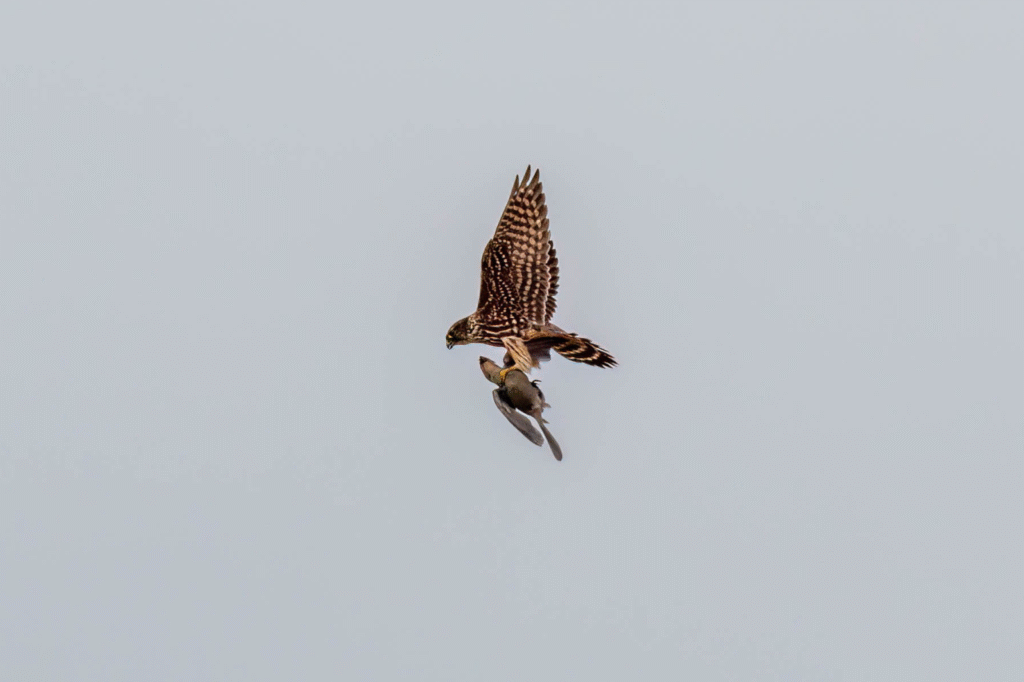
Merlin that took out a Pine Grosbeak over the lake. Photo by Kelly Shattler Foster
Two unidentified swans flew very distantly past the count on the 5th. This, frustratingly, marked our 13th distant and unidentified swans of the season. However, a couple of days later, we finally got better views as two swans flew low over the tip of the point, showing off their smaller bills and heads- our first and overdue Tundra Swans of the season.
We are hoping a Great Black-backed or Glaucous Gull will fly past the count as winter pushes more intensely through the areas north of us. After the count on November 6th, a 3rd-cycle Iceland Gull (Thayer’s ssp.) in the harbor was a fun sighting of a plumage I don’t often get to see in Thayer’s. There was also a gull highlight at the count on the 7th of November. The day started with moderate south winds and a few hours of rain, but as winds shifted to the NW and picked up speed, a single young Black-legged Kittiwake flew past. Even at a great distance, the black M stretched across its back, and the flashy white secondaries were impressive. By the end of the count on that day, the winds were gusting up to 35mph out of the Northwest.

Iceland Gull (Thayer’s ssp.). Photo by Frank Fabbro
The big non-waterbird highlight for me this week was the arrival of the Snowy Owls. As I was walking out to the count on the morning of the 8th, the first owl was quite a sight, sitting next to the breaking waves in the falling snow with the pink glow of the sunrise. Later that day, a second bird was spotted roosting further down the beach. I could see this individual from the count for almost the entire day, and at one point, it flew right past me. A third Snowy later in the week and other sightings in the Great Lakes hint that a broader movement might be in the works this winter.


Snowy Owl. Photo by Frank Fabbro
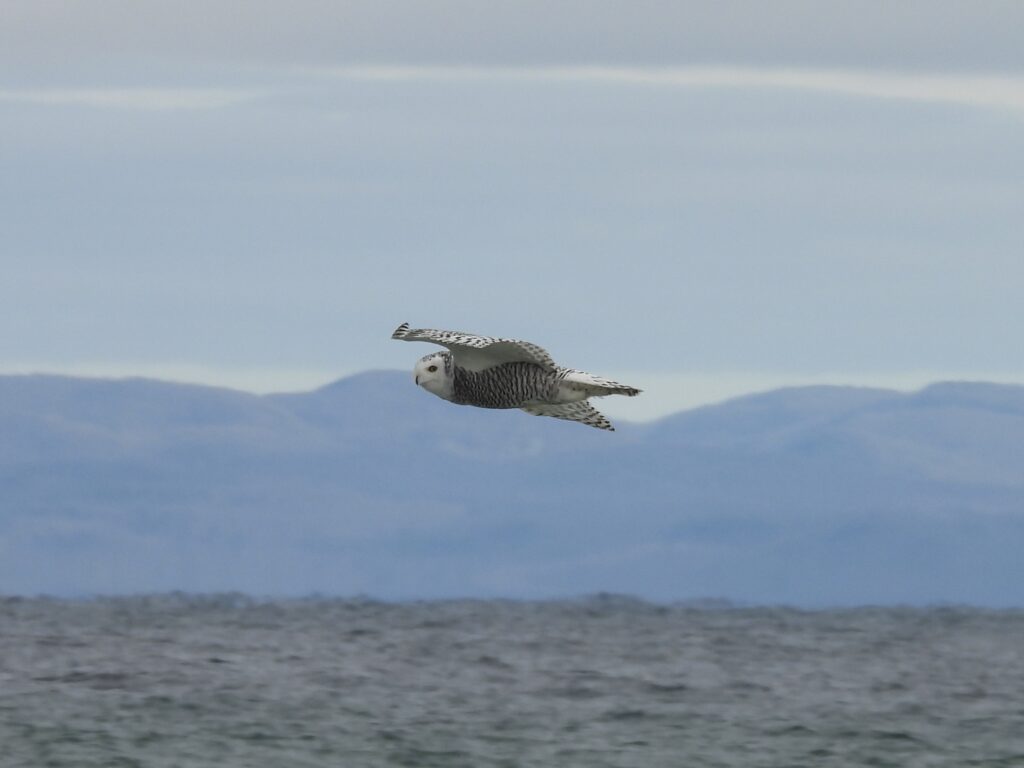
Snowy Owl. Photo by Frank Fabbro
The forecast for early next week is calling for strong 30 mph Northwest winds and slightly warmer conditions. I suspect we will lose our blanket of snow, but I’ll be interested to see whether any waterbirds remain to take advantage of these conditions.
~Frank Fabbro, 2025 Fall Waterbird Counter
Featured Photo: Sunrise at the count
You can now see the waterbird count data on Trektellen! Check it out at trektellen.nl/count/view/4209.
You can keep up with the 2025 Fall Waterbird Count by reading Frank’s weekly blog posts and following WPBO’s social media (Facebook, Instagram, and X). The fall waterbird count runs August 15 through November 15.
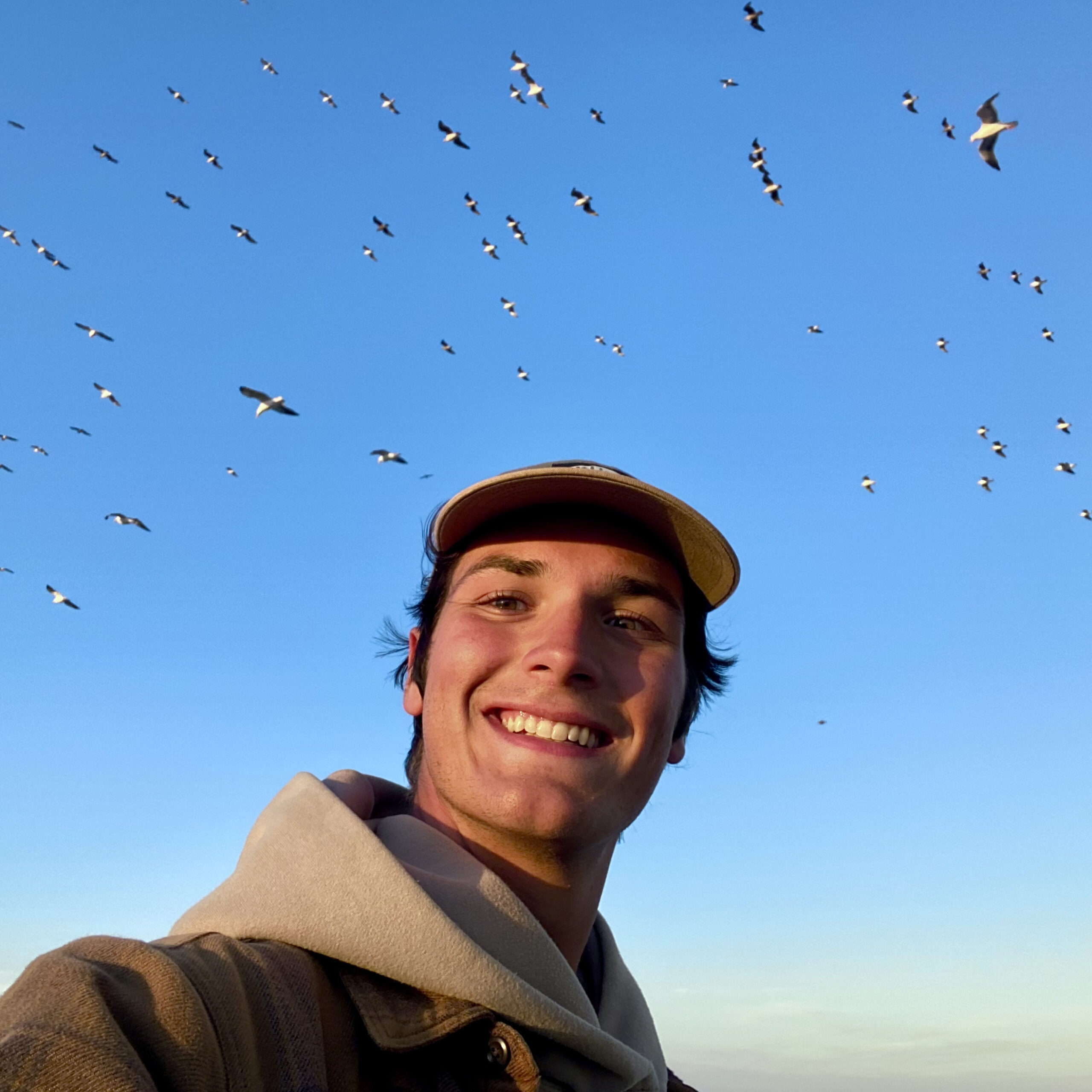
Frank Fabbro: 2025 Fall Waterbird Counter
Frank is an avid birder who was first introduced to the spectacle of bird migration along the Mississippi Flyway in his home state of Minnesota ten years ago. Since then, he has pursued his passion for birds, and the amazing places they inhabit, across the country and around the world. He studied Wildlife Biology and Landscape Restoration at the University of California, Davis, and since graduating has worked on a variety of bird-related projects, ranging from Spotted Owl surveys to prairie-chicken tagging and counting migrating seabirds. He’s excited to be back in the Northwoods, once again experiencing the excitement of fall migration along the shores of Lake Superior.

